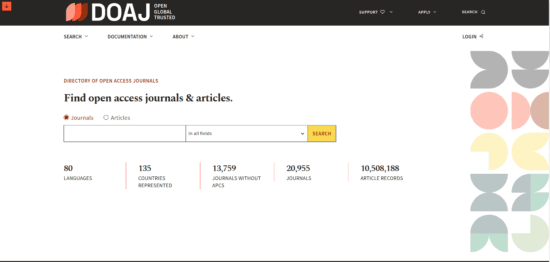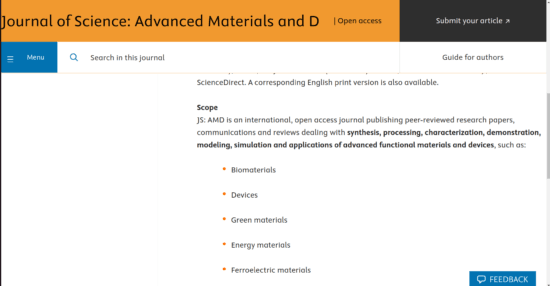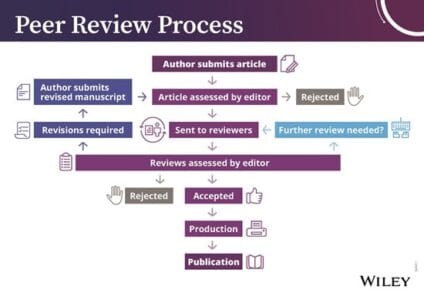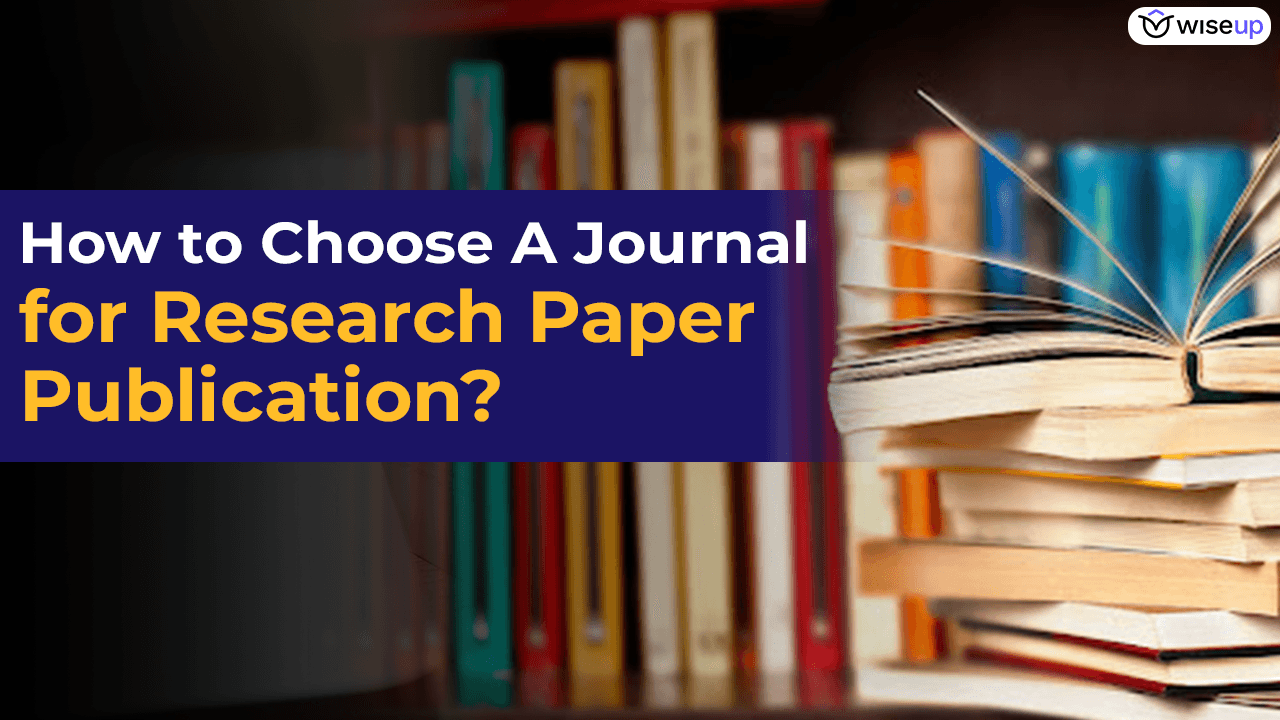Once you’ve completed your research, the next logical step is to publish your work. This not only helps you share your findings with the world but also adds credibility to your work. However, the publication process can feel overwhelming, especially when deciding which journal to submit to. In this guide, we’ll break down the key steps for choosing the right journal for your paper publication and navigating the peer review process.
1. Start with Your Literature Review
One of the best starting points for selecting a journal is your own literature review. During your research, you must have referenced multiple studies, most of which were published in reputable journals. Look at where these similar or closely related research papers were published. This will give you a solid starting list of potential journals that are relevant to your field of study.
Given below is the first page of a research paper: “Green Synthesis of Robust Superhydrophobic Antibacterial and UV-Blocking Cotton Fabrics by a Dual-Stage Silanization Approach”. We will look at this example to understand how to select the journals based on the research papers referenced in the literature review.



2. Use Journal Suggester Tools
To expand your options, take advantage of journal suggester tools offered by publishing houses. Based on your literature review and suggestions from the tool, create a shortlist of 10-12 journals to consider for publication. This can save you time and ensure that you’re considering journals relevant to your research.
One example is the Taylor & Francis Group’s Journal Suggester Tool. Simply input your abstract, and it will recommend the most suitable journals for your work from their portfolio of over 2,000 journals.
Given below are step-by-step screenshots from the Taylor & Francis Group’s Journal Suggester Tool.


3. Verify the Journal’s Authenticity
Unfortunately, not all journals are legitimate. To avoid fake or predatory journals, focus on journals that are indexed in reputable databases. Journal indexations ensure that the journals listed are of good scientific quality and are not fraudulent. Popular indexation services include Web of Science, Scopus, and PubMed. For open-access journals, refer to DOAJ (Directory of Open Access Journals), which ensures the journal is credible.

In addition to verifying authenticity, pay attention to journal rankings. Journals are often categorised by quartiles (Q1, Q2, Q3, Q4), with Q1 journals being the top 25% of their field, representing the most prestigious and reputable journals. Aim to publish in a Q1 journal if possible. The journal quartiles with their ranking % is shown below:

4. Check the Journal’s Scope and Requirements
Before submitting your paper, ensure that the journal covers the topic of your research. Visit the journal’s website to review its scope, types of articles it publishes, and specific guidelines such as format, word count, and structure. Each journal typically provides author guidelines that outline the publication requirements, which are crucial to follow to avoid desk rejection.
Given below is an example of Journal of Science: Advanced Materials and Devices – where the scope is shown as below. You will have to check if your research paper lies within this scope before you think about the next steps.

5. Rank Journals Based on Impact Factor
Once you’ve verified the journal’s authenticity and confirmed that it covers your research topic, arrange your shortlisted journals by their impact factor. The impact factor is a metric that measures the average number of citations to recent articles published in the journal. A higher impact factor usually indicates a more influential journal. You can start by submitting your paper to a high-impact journal and move down the list if necessary.
Apart from the impact factor, you can also consider other metrics like CiteScore. Consulting with professors or senior researchers can also help you make an informed decision about which journal to submit to first.
To learn more about this, check out the video below:
6. Understanding the Peer Review Process
Once you’ve submitted your paper, it will go through a rigorous peer review process before publication. Here’s a quick breakdown of how it works:
Editor Assessment: The editor first checks whether your paper fits the scope of the journal. If it does, it moves forward for review.
Reviewer Evaluation: Experts in your field review the paper for factors such as novelty, clarity, and the reliability of your conclusions. They may suggest revisions, reject the paper, or recommend acceptance with minor changes.
Revisions: If the reviewers ask for revisions, carefully address their comments and resubmit the paper. The process may involve multiple rounds of revision until the reviewers are satisfied.
Final Decision: Once the reviewers are satisfied with the revisions, the paper will be accepted for publication.
The picture below shows the entire process in the form of a mindmap for better understanding.

Choosing the right journal for paper publication requires careful consideration of various factors, including the journal’s relevance to your research, its authenticity, impact factor, and peer-review process. By following these steps, you can maximise your chances of publishing in a high-quality journal and gaining the recognition your research deserves. Paper publication can take anywhere from a few weeks to a few months, so being patient is key.
Now if you wish to know how to write a research paper from scratch to get it published, then you can join our course – A-Z of Research Paper Writing and Presentation.
All the best for your research career ahead! If you have any questions, put them down in the comments below and we will get back to you as soon as possible!




